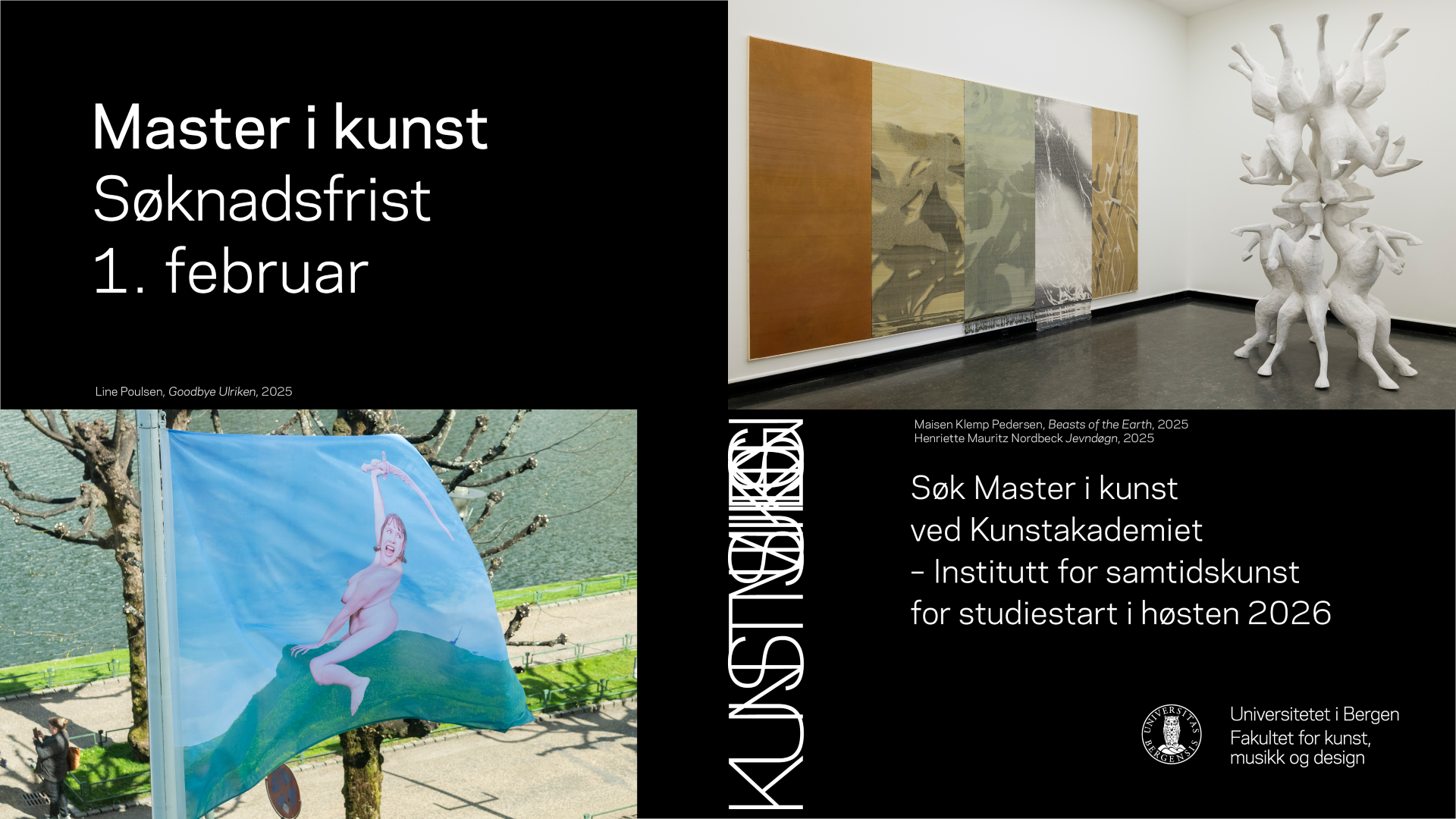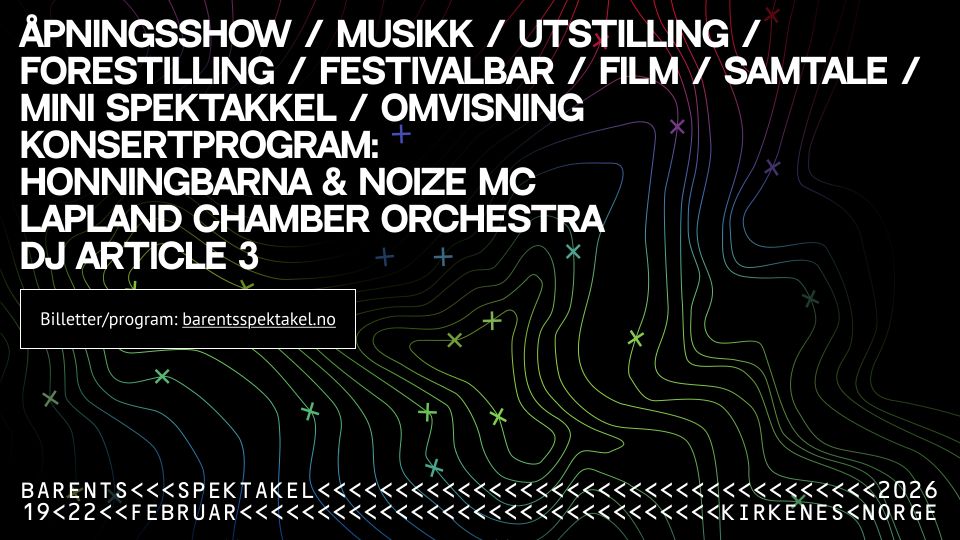
Etter et år med oppussing gjenåpner Bergen Kunsthall til helgen med en soloutstilling av den italienske kunstneren Rosa Barba i hovedsalene og en mindre utstilling med Willem de Rooij i prosjektgalleriet No.5. Nyåpningen er lenge etterlengtet i det bergenske kunstmiljøet. Samtidig forlater kunsthallens direktør de siste ti årene, Solveig Øvstebø, Bergen til fordel for direktørstolen i The Renaissance Society i Chicago. Øvstebø forlater på ingen måte et synkende skip, men en institusjon som har vokst til å bli en nasjonalt og internasjonalt anerkjent kunsthall.
Den Berlinbaserte kunstneren Rosa Barba jobber primært med analog film i installasjoner og med skulpturelle arbeider. Utstillingen i Bergen Kunsthall er tredje og siste i en syklus som ble påbegynt i Jeu de Paume i Paris og Kunsthalle Zürich i fjor. Tematisk utforsker utstillingen i Bergen Kunsthall forståelser av tid i relasjon til landskap, geologi og film som et tidsbasert medium.
Intervjuet gjengis på originalspråket.

How are things going with your exhibition?
Fine, we will open on Saturday and we installed a month ago in order to document the exhibition for my publication Time as Perspective, which will be published in March. So the pieces should feel at home by now at Bergen Kunsthall.
The medium of analogue film seems to be used by many artists today. It could perhaps be said to be a signifier of a specific type of poetic nostalgia that one could say subverts Walter Benjamin’s claim that the photographic image has no aura. In your opinion, does the aesthetics of analogue film produce aura, or is it the Instagram of the privileged?
Analogue film is not nostalgic for me; it is a very specific medium with particular characteristics, like the importance of light, the illumination through a projected image and the materiality meeting time. I wouldn’t call it aura but illumination – something only an analogue projector can do. It has been my tool since an early stage and an ongoing research field of mine. The fact that film is disappearing from the commercial world means that it can now finally exists as its own art form – like many other mediums, for example, painting or sculptural materials.

The title of your show is Time as Perspective and you use the term «deep time» when you talk about your work. Could you say something about the title and how your work relates to notions of time?
The theme Time as Perspective means for me a kind of deep geological time, like a time exposure in a photograph, but taken in a way that the image doesn’t blur; instead you see the depth and structure of a movement or a history, with all its changes. I think of time as a layered slab, with periods stacked on top of each other, more than as a single stretched line. I often feel that it’s something that you need to find the right angle to look at in order to see it. Using my film camera allows me to be synched with or close to «time», especially when I film in wide-open spaces where time seems to exist endlessly in every direction – it’s almost three-dimensional.
Your exhibition in Bergen is the second «chapter» and it precedes two exhibitions with the same title, a «prologue» at Jeu de Paume in Paris and a first «chapter» at Kunsthalle Zürich. How has the project evolved?
It’s the idea of how the planned layout of an exhibition can expand and grow over time into another space. Some pieces return in the new space but are confronted with new dialogue-partners, which are additional pieces, or find themselves in another constellation in the new architecture.

You use letters and text frequently in your work, what part does language play in this exhibition?
I fragment my works into different narrative layers (text, sound and image), which are meeting, communicating with or disturbing each other. For example in A Private Tableaux from 2010, which is in the show as well, I walked underneath the Mersey River recording the subterranean city pumping air through these tunnels. On the ceilings of these tunnels there are these handmade white drawings the engineers make to examine the pressure cracks made by cars overhead. They are like wall paintings or cave drawings, but also like a sign language. It is nearly impossible to imagine them as functional. They seem to follow some kind of logic or make some kind of sense. I wrote a narrative about these images and cut the film with this text of these possible explanations. There is a sort of dialogue with the text and image – as sort of a Q&A. In Time as Perspective, the text is positioning another narrative rhythm to the movement of the oil pumps: a looping thought which is being inscribed.
In a sense, all media in art tends to speak about itself, its history and contemporary conditions. Analogue film seems more strongly connected to its machinery than the digital. Do you use projectors as sculptural elements in your installations, or are they just part of the necessary apparatus of representation?

Bringing projected images and recollected language, material and imagined objects, into an oppositional and conflating dialogue is very important to me. The works speculate on the nature of the document not just as a finalized version, but as the present tense of reflection – less an act of translation than the continual transposition of material into image and back again. The projector is an agent in the space and part of this dialogue. In my objects I deconstruct machineries until they reach the needed status for the object.
What role does sound play in your work?
Sound has a very important role for me. For all my films, I record the sounds of the actual space during the shoot, but also make additional recordings of the exact location and its immediate surroundings. Some sounds are almost inaudible to us, and I reinforce certain aspects of them in the composition afterwards, for example, the rumbling sound from a pipe. I hand over all this material to composer and musician Jan St. Werner, a long-term collaborator. He then puts forward a composition during my editing process. Other sounds are created and mixed with the existing soundtrack. It’s like a completely separate narrative layer that starts a conversation with the imagery inside the piece.
In your opinion, what is the defining element of photographic representation, the lens or the chemical process?

It’s the light and its time.
What artists or filmmakers are most influential for your work? Is it relevant for you to separate cinema and visual art as different art forms?
Looking at art forms in a classical way, they are all different art forms. In my case, I can’t separate cinema and visual art as I am moving between them and merging them together all the time. I am influenced by literature, science fiction, conceptual art and avant-garde films.
What’s next for Rosa Barba?
Complex orchestrated films and objects.


















